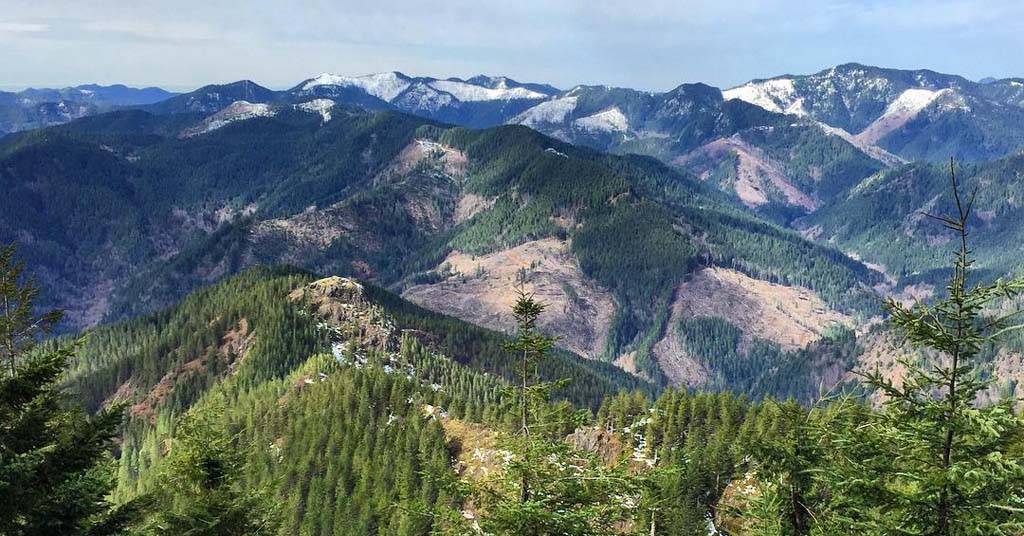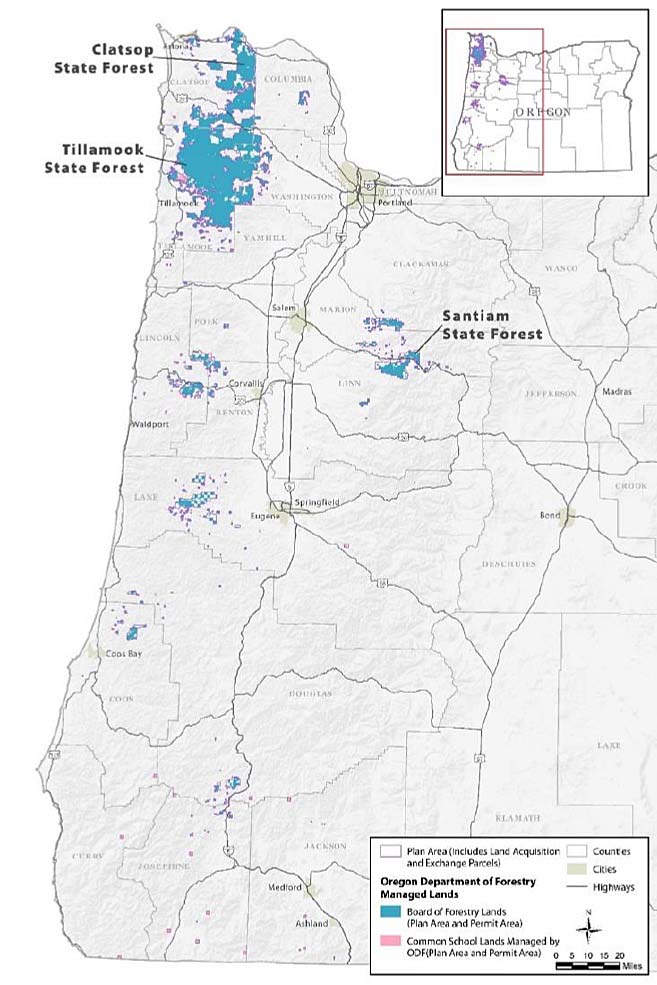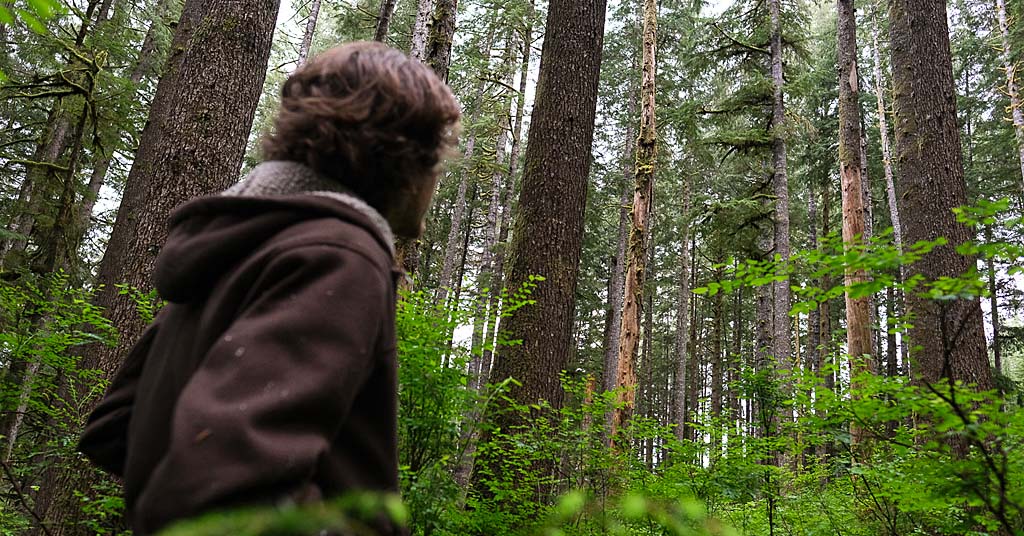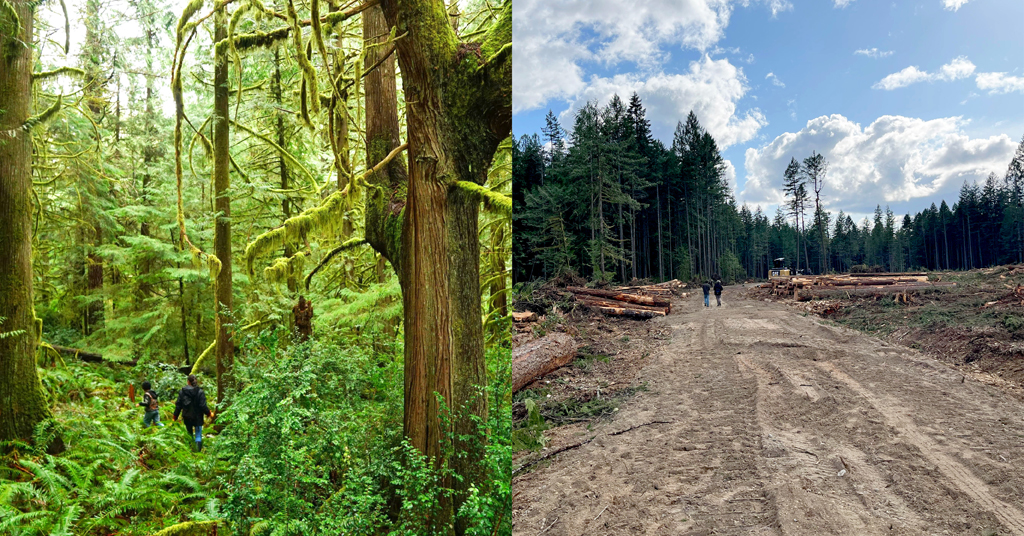The plan should help endangered species but will decrease logging revenues in Coast Range communities and elsewhere

New protections: As seen from atop Kings Mountain, Oregon’s Coast Range is a checkerboard of clearcuts. And wildlife habitat. Photo: ODF
By Kendra Chamberlain. March 13, 2024. A good compromise leaves everyone unhappy.
That describes the Oregon Board of Forestry’s 4-3 vote last week to move forward with its controversial Western Oregon State Forests Habitat Conservation Plan that will reduce logging on western state forest land to prevent endangered species from going extinct.
The plan is the result of years of work and tough negotiation between the timber industry, environmental groups and county governments, with jobs, millions of dollars in revenue and the potential fate of 17 endangered species at stake.
“I just don’t see a better path,” said board member Ben Deumling at the March 7 meeting during which the plan was approved. “A lot of people have told me there is one, and I wish from the bottom of my heart that that were true. But I don’t see that.”
The final HCP will see about half of western state forestlands, much of it in the Coast Range in northwest corner of the state, set aside for habitat conservation.
Logging interests have claimed this will cost jobs and threaten livelihoods.
Currently, Oregon’s western forests produce 225 million board feet of lumber, and generate nearly $64 million in annual revenue, a percentage of which is distributed across 14 counties.
Under the HCP, logging on western state forestlands is expected to drop roughly 20%, producing an estimated 185 million board feet per year.
Some western counties are expected to see a steep decrease in logging revenue—possibly “multi-million dollar losses,” according to Oregon Capital Chronicle’s Alex Baumhardt.
Still, some new areas will open up for logging under the HCP, which will see other counties generating more timber revenue than before.
Protecting species, avoiding lawsuits
On March 7, a convoy of logging trucks surrounded the Department of Forestry building in Salem to protest the plan while the board heard the state forester’s recommendation and later voted on it.
According to Michael Lang, Oregon policy senior program manager at the Portland-based Wild Salmon Center, environmentalists didn’t get everything they wanted. But it’s still a conservation win.
“The HCP is an improvement in the status quo,” Lang told Columbia Insight. “These state forests have been overharvested for years.”
The state’s western forests are home to 17 threatened or endangered species, including the spotted owl, coho, chinook and steelhead fishes, and the red tree vole and coastal marten.
But only 11% of western state forestland is considered “complex layered forest,” offering important habitat for those species.

Oregon Department of Forestry’s Habitat Conservation Plan Area and Permit Area. Map: ODF
The state has faced multiple ESA-linked lawsuits related to habitat destruction over the years. Adoption of the HCP is expected to decrease its future legal entanglements.
Lang said the HCP will see nearly 50% of state forestlands in western Oregon protected as habitat conservation areas, including areas designated for riparian conservation—but that the HCP isn’t a species recovery plan.
“It’s only designed to prevent the local extinction or extirpation, if you will, of [the endangered and threatened] species. It’s not a forest-wide recovery plan,” he said.
And the plan doesn’t strictly adhere to the best science for habitat conservation. Lang pointed to stream buffers, which help protect cold water. Under the HCP, stream buffers are set at 35 feet.
“The best available science shows that stream buffers should be even larger than they are in the Habitat Conservation Plan, particularly for headwater streams and the coast,” said Lang. “Really, something more like a 50-foot buffer on either side would better protect aquatic species downstream. So that’s just one example of how it’s a compromise.”
The HCP will need to pass hurdles at the federal level to comply with the Endangered Species Act, and will dictate logging on state forest lands for the next 70 years.
Offsetting financial impacts
Gov. Tina Kotek said in a March 5 letter to the board that she’s still working with county representatives to “permanently address the estimated shortfall” from logging revenue declines expected under the plan.
“That work with representatives of the counties continues, but I want you to know that I see a viable pathway forward to address the estimated reduction in timber receipts that would result from implementing the anticipated HCP,” said Gov. Kotek.
Meanwhile, the Oregon House and Senate Republican Caucuses urged Kotek to immediately reconsider the plan.
“This 70-year forest policy does not support a balance between economic, environmental and social benefits to all Oregonians,” the legislators wrote.










